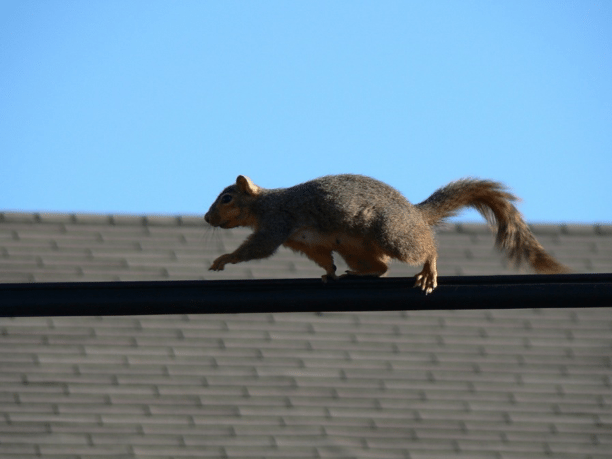Salmonellosis, or Salmonella Poisoning if that first name wasn’t scary enough, is a type of illness brought on by exposure to certain strains of salmonella bacteria. Food, water, and other items tainted with salmonella usually look and smell normal, but if the destructive bacteria finds its way into your stomach and intestines, it can wreak total havoc on your digestion—and ruin your entire week.
Salmonellosis is often thought of as a food-borne illness, so it may seem a teeny bit odd to discuss it on this blog. But unfortunately, salmonellosis does not just come from poorly-handled food; it can also be contracted following interactions with wild (and even domesticated) animals. Read on for more information about this bad, bad bacteria:

How do people get sick with salmonellosis?
There are two main causes of salmonella poisoning:
- Animal contact. Some animals are known carriers of salmonella. For example, many reptiles have the bacteria in their gut and, while it generally doesn’t bother them, they can pass it onto humans by way of their droppings and/or skin secretions. The feces and urine of birds and many kinds of rodents (including rats, mice, and squirrels) can also contain salmonella; humans may be exposed to the disease either directly (by touching the waste product and then touching their mouths) or indirectly (by inhaling dust from dried waste located in their homes or another enclosed area).
- Contact with contaminated food and water. Meats and animal byproducts can become riddled with salmonella due to unsanitary slaughtering practices or a salmonellosis infection during the animal’s life. If the diseased meat, eggs, or milk are then consumed raw or undercooked, then the bacteria can live on inside your stomach and intestines. Fruits and vegetables that come in contact with the bacteria or are washed in salmonella-infested water can be carriers, too.
What are the symptoms of salmonellosis?
The most (in)famous calling cards of salmonellosis are severe abdominal cramps, fever, and frequent bouts of diarrhea. In addition to these, the patient may also experience headaches, chills, nausea and vomiting, muscle pain, and dizziness. Please note that bloody stools, a fever over 38°C (or about 100.5°F), and jaundice-like symptoms are not normal and may indicate a more serious infection. In these cases, a trip to the hospital may be warranted!
Can salmonellosis be cured?
Yes, though the cure is often just waiting for the infection to run its course—and anyone who’s ever had food poisoning will tell you that doing so is unpleasant. Extremely unpleasant. Like, “Maybe dying would actually be preferable to living through this?” unpleasant. Still, the sickness will typically go away on its own within four to seven days.
When dealing with salmonellosis, it’s absolutely critical for the patient to stay hydrated in spite of any diarrhea/vomiting that they’re experiencing. If they begin feeling (or showing) any symptoms of acute dehydration, or the vomiting/diarrhea is absolutely unrelenting, then emergency medical treatment may be required.
It’s not unheard of for some salmonella infections to spread to the bloodstream and then to other organs, and in these cases, the illness can be fatal. Again, if the patient is experiencing severe symptoms, they should go to a hospital! A regimen of antibiotics can help clear up the infection before it does any more damage.
What precautions should I take to avoid being infected with salmonella?
Good question! Here are a few tips for avoiding salmonellosis:
- Take food safety seriously. This includes washing all surfaces thoroughly, cleaning your hands before and after handling the food (and after using the restroom), and rotating out your dish towels every day. To avoid cross-contamination, wash your hands and switch utensils between working with different kinds of foods; don’t slice a tomato with the same knife that you already used to cut up raw chicken! And be sure to keep any items that are not shelf-stable (including leftovers) in the refrigerator until you’re ready to heat or eat them. Never consume raw or undercooked meat!
- Practice good hygiene habits during and after interacting with animals. While we really don’t advocate bothering wild animals at all, we understand that stuff happens—especially when small children are involved. And it’s not unheard of for humans to contract salmonellosis from their pets. So anytime you have an encounter with an animal, be smart about it: don’t share your food or your water bottle with it, don’t kiss or put the animal near your mouth, and avoid the animal’s feces and urine. After you’re done touching or handling the critter, clean your hands (and arms, and anywhere else on your body that the animal touched) thoroughly using sanitizing gel or soap and water. Small children may need to be reminded (or nagged) to do this, so don’t let them get away with blowing it off!
- Evict wild animals that have infiltrated your home and/or your property. As we said earlier, salmonella is one of many diseases that wild animals can carry and spread; dust from dried urine or feces can easily get into your house’s ventilation system when an animal is hiding in the attic or chimney, and humans often learn of an infestation when they accidentally touch fresh “leavings.” Pest animals are also known to raid human homes for food and supplies, and whatever they touch but don’t take can become a vessel for bacteria. Having an animal removed from your home by a trained professional is essentially telling it, “You and your germs are not welcome here!”
■■■
Some methods of avoiding salmonellosis are no-brainers (“Don’t stick a wild lizard in your mouth!”), some are a little more complex (“Always cook meats to a safe temperature!”), and some may even feel a bit like a nuclear option (“If you find squirrels in your attic or chimney, you need to have a professional round them up and relocate them ASAP!”). But here’s the bottom line: while salmonellosis infections are usually not fatal, they’re absolutely not fun to deal with. So please, folks: do whatever you can to stay as far away from dangerous salmonella bacteria as possible!






